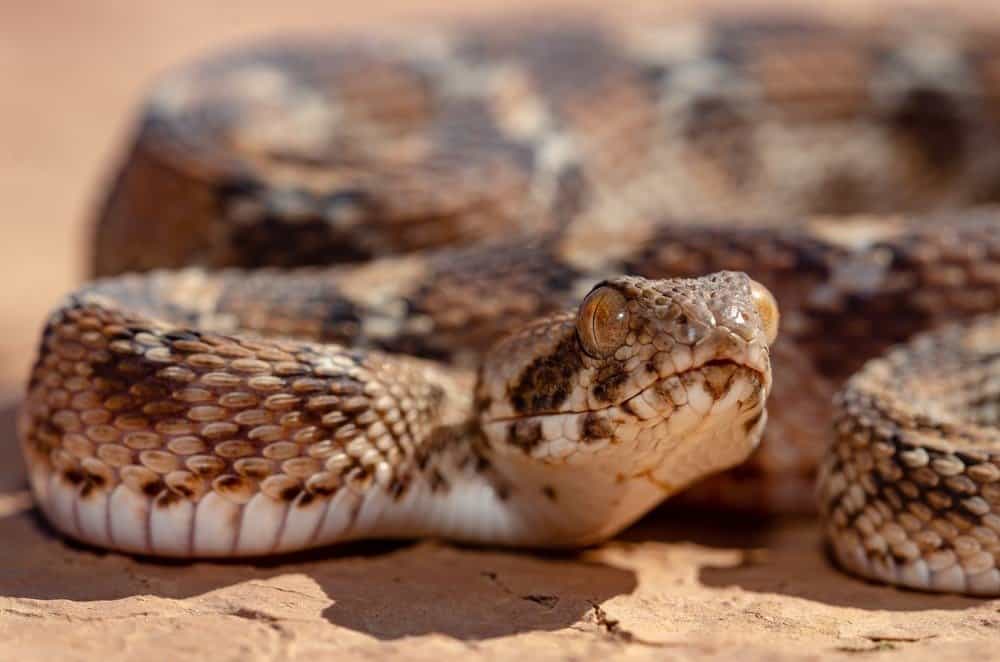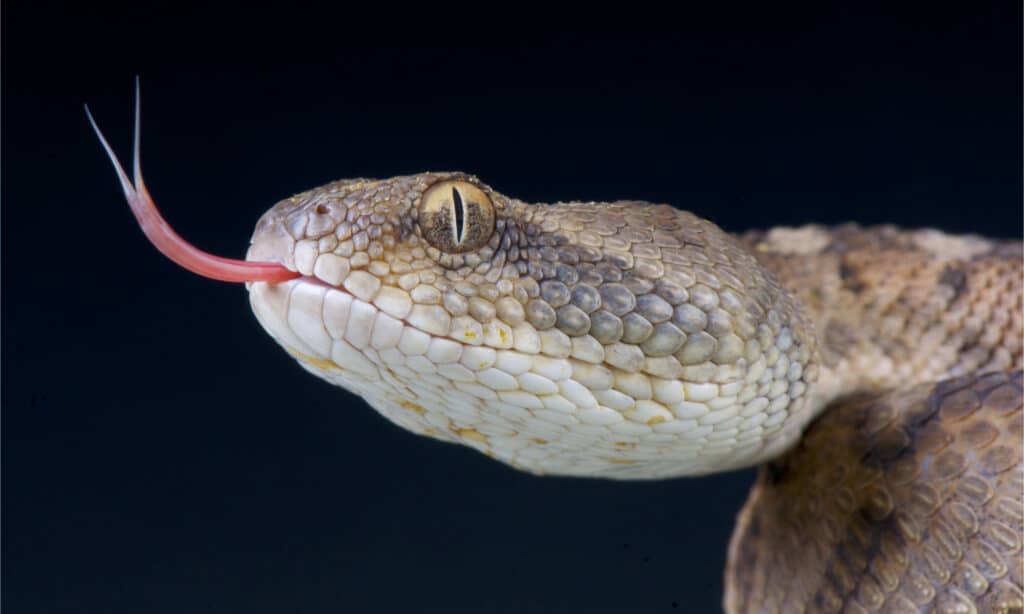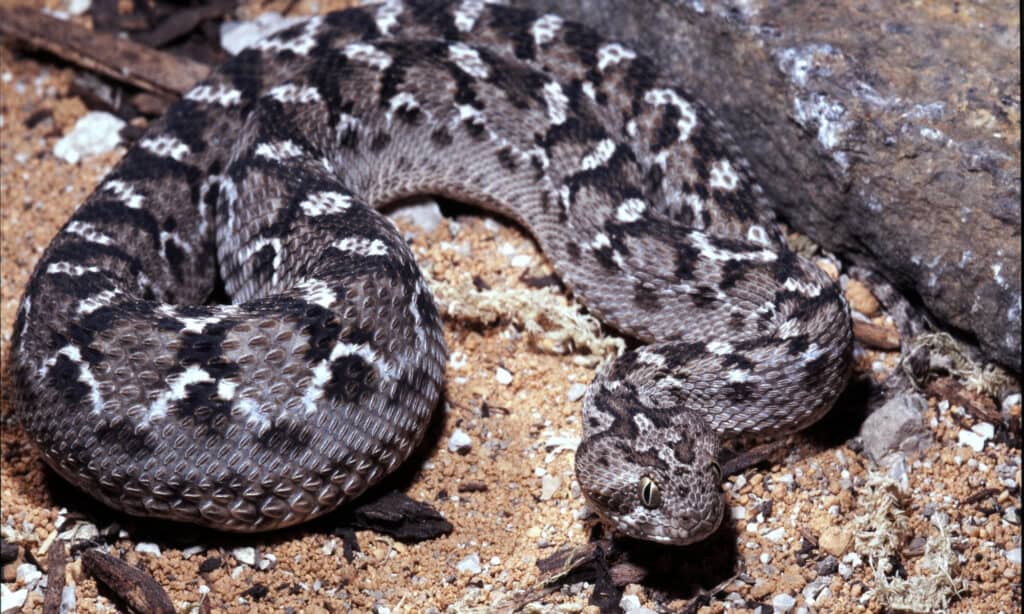Continue reading for our analysis...

Sometimes Small Snakes can Pack a Powerful Punch
BBC gives viewers an endless amount of entertaining content. This time, they’re sharing with us a clip about one of the deadliest animals in the world – the saw-scaled viper! Asia is the home of the venomous Indian saw-scaled viper. The smallest of the main four snakes is the one that results in the majority of incidences of snakebites and fatalities.
While other snakes may show off in size, this little serpent packs a punch despite being quite small. The middorsal of Indian saw-scaled vipers is covered in a sequence of irregularly colored, but primarily whitish spots, bordered with dark brown, and divided by lighter inter blotch areas. Its base color is a pale beige, gray, reddish, olive, or pale brown.

Saw-scaled vipers use their scales to create a sawing sound that is surprisingly loud.
©reptiles4all/Shutterstock.com
The main gentleman in the BBC clip we’ve included below doesn’t let the threat of a saw-scaled viper hold him back. He still works hard to educate viewers all about the animal and even pushes the boom mic close to capture the incredible sounds this snake makes.
The name of these mysterious vipers comes from rows of highly keeled scales on their sides that face upward rather than backward, as is typical for other snakes. The saw-scaled viper compresses its body into a compact “S” shape when it feels threatened. Then, it proceeds to brush its scales together, producing a scratchy sound resembling a small saw.
Seeing these tiny snakes use their scales to make such a loud noise is simply amazing. Stridulation is the term used to describe the act of animals rubbing their bodies together to produce sounds.
The World’s Deadliest Snake
Echis carinatus can produce up to 72 mg of dry venom, with an average production of 18 mg. The deadly dose for an adult is only thought to be 5 mg. Both local and severe systemic symptoms that could be lethal are brought on by envenomation. Within minutes of the bite, swelling and discomfort are among the local symptoms.
Blisters may develop on the skin and in severe situations, the swelling may ascend the entire injured body part within 12 to 24 hours. The amount of venom produced by each species varies greatly, as does the amount injected per bite. Because of the accessibility of anti-venom, the fatality rate from their bites is roughly 20%.

These
snakes vary in color
from gray to pale tan.
©Vladislav T. Jirousek/Shutterstock.com
A local in the BBC video says that 20,000 to 50,000 people die in India each year from snakes. Every year, 5.4 million individuals are bitten by venomous snakes, and envenomation occurs in half of these cases. These bites cause 80,000 to 140,000 fatalities and countless other significant injuries every year.
They typically take cover during the day in deep animal burrows, rock cracks, and downed rotten logs. They might bury themselves in the sand, with only the head visible. The majority of snakebite incidents are caused by saw-scaled vipers because of their stealthy and ferociously hostile behavior. These snakes can lash out like a spring that has been let loose thanks to their distinctive position, a double coil in the shape of an eight with the head positioned in the middle.
Discover the "Monster" Snake 5X Bigger than an Anaconda
Every day A-Z Animals sends out some of the most incredible facts in the world from our free newsletter. Want to discover the 10 most beautiful snakes in the world, a "snake island" where you're never more than 3 feet from danger, or a "monster" snake 5X larger than an anaconda? Then sign up right now and you'll start receiving our daily newsletter absolutely free.
Thank you for reading! Have some feedback for us? Contact the AZ Animals editorial team.






